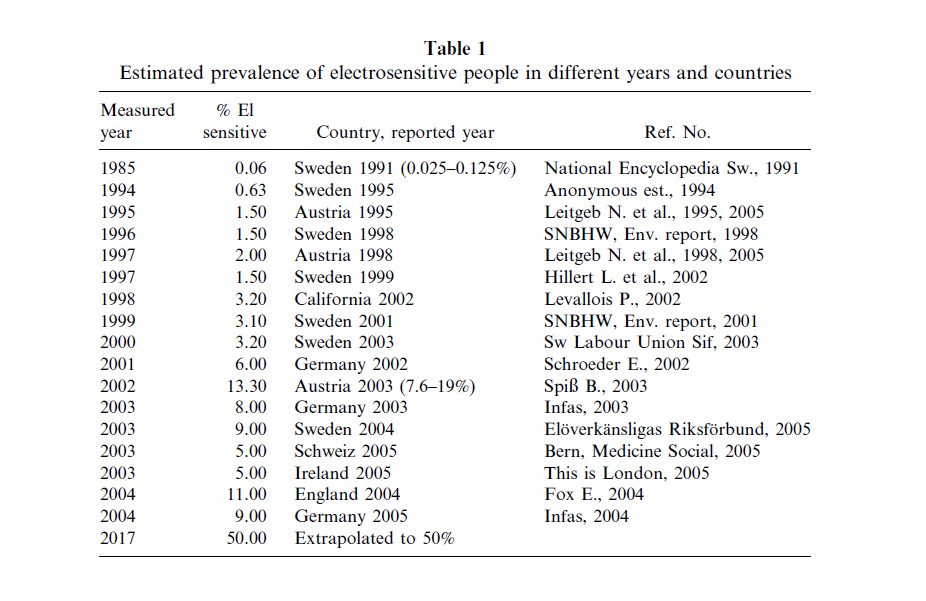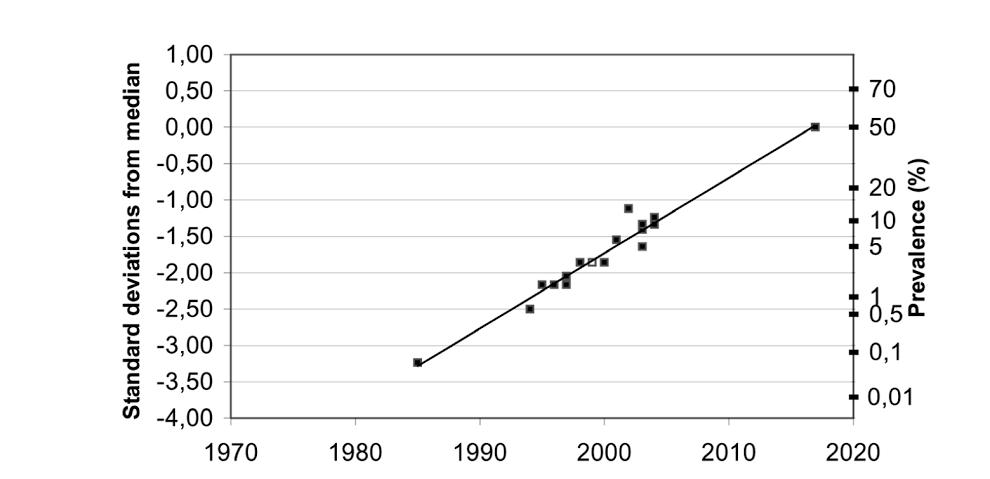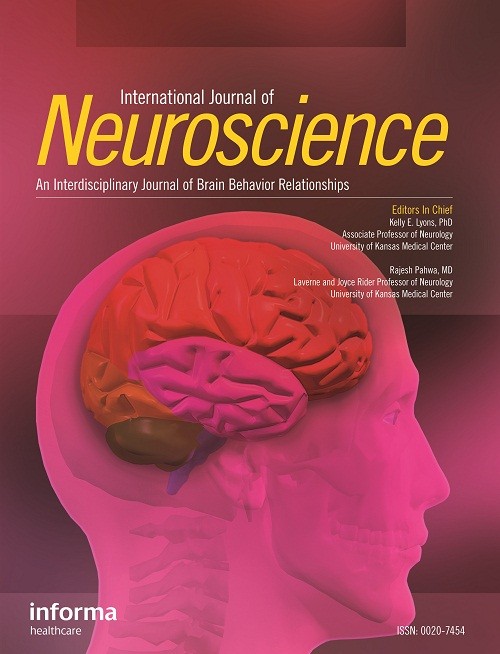
[Splendida rassegna della dott.ssa Inglese Erica Mallery-Blythe sulla ipersensibilità ai campi elettromagnetici.
Impressionante il numero di articoli scientifici che correlano, con nesso di causalità evidente, l’esposizione alle radiazioni elettromagnetiche emesse da diversificate sorgenti (cellulari, wi-fi, stazioni radio-base di telefonia mobile, smart-meter, ecc.) all’induzione di effetti biologico/sanitari.]
“For printing purposes:
The first 1-7 pages are body text, the rest are references. This document consists of 79 pages.
Author’s note:
This summary is expanded section of a larger document entitled “Electromagnetic Health for Children”. The full document is designed in response to requests for information detailing current health concerns of electromagnetic fields (EMFs) with a focus on radiofrequency (RF) radiation. This is an expanded subsection covering EHS only.
Background:
We are currently witnessing the largest change to the Earth’s electromagnetic environment that has ever taken place in human history. This change has taken place in the very short period of a handful of decades and continues to escalate at an exponential rate (Appendix 1). Given that household electricity, which was the first anthropogenic (man-made) electromagnetic field (EMF), only became prolific after the turn of the century, artificial EMF has barely seen one generation from cradle to grave. The use of higher frequency microwave devices such as mobile telephony, Wi-fi and smart meters, have suddenly become commonplace despite almost no safety testing and decades of evidence of potentially lethal effects. This has sparked a political and scientific debate that is gathering momentum on a daily basis, raising concern about the continued use of such devices. One may assume when witnessing the vast implementation of, for example Wi-fi in the home, school, workplace or public domain, that experts have provided sufficient evidence of safety to overwhelm scientific concern. This is not the case.
The World Health Orgnaisation (WHO) / International Agency for Research on Cancer (IARC) Classified RF as a Group 2 B ‘Possible Human Carcinogen” (2011). Despite this, there has been no attempt in the UK at disseminating this important information to the public. Conversely, it was not even mentioned in the AGNIR government commissioned report a year later in 2012. The only safety guidelines currently used in the UK are those constructed in 1998 regarding ‘thermal (heating) effects’ of non-ionising radiation. These are not protective of health given the vastly documented non-thermal effect taking place orders of magnitude below these levels. They are obsolete. Other countries have responded to this information and have safety limits more biologically sensible thousands of times below ours (see Appendix 2). Mechanistic data is available to explain these effects and every bodily system is affected (as one would expect from a radiation induced illness).
The very broad range of RF emitting devices on the market were never pre-market safety tested and many now contain fine print warnings from the manufacturers which warn that one must keep the devices a minimum distance from the body which in some cases is incompatible with use. The public are generally not aware of these warnings or the increased vulnerability of certain groups such as children, foetuses, elderly, pregnant women, infirm and those with EHS.
The full paper gives an overview of facts that should be considered during the policy change that is clearly necessary, and this subsection concerns Electromagnetic Hypersensitivity (EHS) only.”
Documento scaricabile al seguente link:
Mallery-Blythe-v1-EESC







